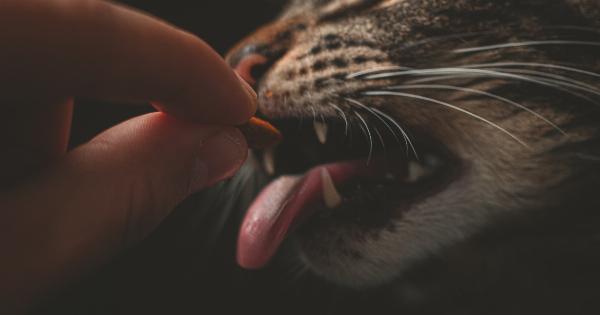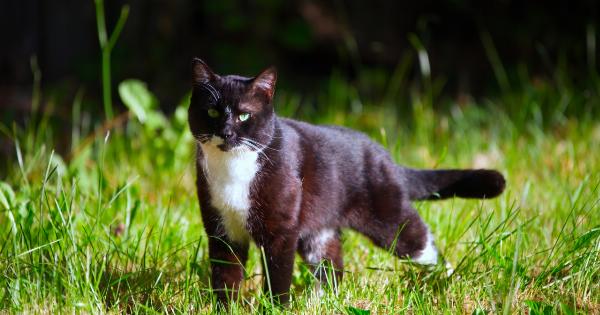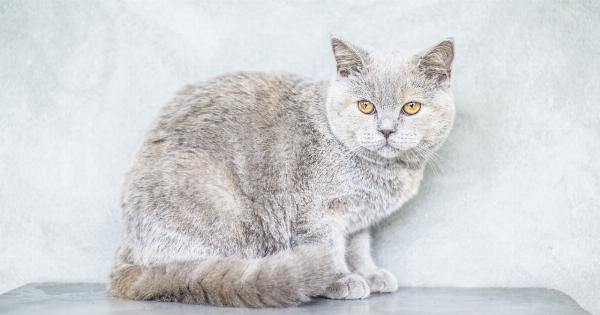Cats are notorious for being finicky eaters. It can be frustrating when your feline friend turns up their nose at the food you lovingly prepared for them.
However, understanding why cats are picky and implementing some simple tips and tricks can help you ensure that your cat is getting the nutrition they need while also satisfying their discerning taste buds.
Understanding Why Cats Are Picky Eaters
Before diving into the tips and tricks, it’s essential to understand why cats can be so choosy about their food. Here are a few reasons:.
Sensitivity to Smell
Cats have an incredibly keen sense of smell, and certain aromas may be off-putting to them. They can easily detect even the slightest change in the scent of their food, which may be enough to make them reject it.
Texture Matters
Cats also have specific preferences when it comes to the texture of their food. Some may prefer pâté-like consistencies, while others may enjoy chunks or shreds.
Understanding your cat’s texture preferences is crucial in finding the right food for them.
Previous Negative Experience
If your cat has had a negative experience with a particular type or brand of food in the past, they may develop aversions towards it. It’s important to introduce new options gradually and positively to avoid triggering any negative memories.
Health Issues
Underlying health issues can also contribute to a cat’s picky eating habits. Dental problems or gastrointestinal sensitivities can make chewing or digesting certain foods uncomfortable for them.
It’s always wise to consult a veterinarian if you suspect any health-related causes.
Tips to Encourage Your Cat to Eat
Now that you understand some of the reasons behind your cat’s picky eating, let’s explore tips and tricks to entice them to enjoy their meals:.
1. Offer a Variety of Flavors
Just like humans, cats appreciate variety in their diet. Experiment with different flavors and textures to find what your cat likes best. Rotate their meals to keep them excited and prevent boredom.
2. Warm Up the Food
Warming up your cat’s food can enhance its aroma, making it more appetizing. Cats often prefer their food at room temperature or slightly warmed. However, always test the temperature to ensure it’s not too hot before serving it.
3. Add Some Moisture
Moist foods are often more appealing to cats, as they mimic the texture of fresh prey. Consider adding a bit of warm water or low-sodium broth to your cat’s dry food to make it more palatable.
4. Try Different Food Bowls
The material and shape of your cat’s food bowl can make a difference. Some cats may have a preference for ceramic or glass bowls, while others may enjoy eating from shallow plates.
Experiment with different options to see which one your cat prefers.
5. Optimize Feeding Schedule
Establish a routine feeding schedule to train your cat’s appetite. Offer their meals at the same time each day, and avoid leaving food out for extended periods.
Cats often prefer to eat smaller, more frequent meals, so consider dividing their daily portion into several servings.
6. Avoid Food Contamination
Make sure your cat’s food and water bowls are clean and free from any remnants of old food. Cats have a strong sense of smell, and the presence of old food odors can deter them from eating.
7. Provide a Calm Eating Environment
Cats are sensitive creatures who prefer a quiet and calm eating environment. Place your cat’s food in a secluded area away from noisy appliances or high foot traffic. This will help them relax and focus on their meal.
8. Add Incentives
Add a small amount of a high-value treat or a flavorful food to your cat’s regular meals as an incentive to eat. This can help stimulate their appetite and encourage them to try new foods.
9. Consult with Your Veterinarian
If your cat’s picky eating persists or you notice any other symptoms, it’s crucial to reach out to your veterinarian. They can rule out any underlying health issues and provide tailored advice for your specific situation.
10. Be Patient
Lastly, be patient with your cat during this process. Changing their eating habits can take time, and what works for one cat may not work for another.
Stay observant and flexible, adjusting the tips and tricks to suit your cat’s preferences and needs.





























